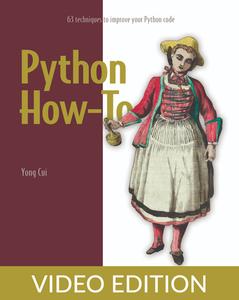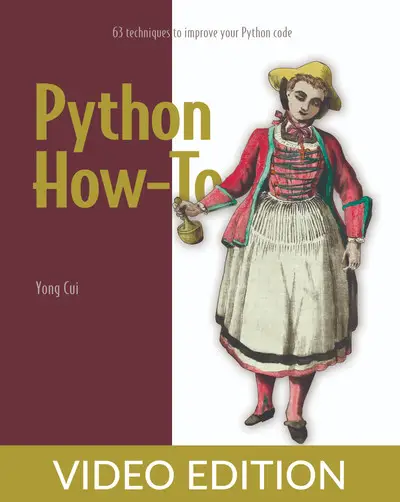Python How-To: 63 techniques to improve your Python code
MP4 | Video: AVC 1920 x 1080 | Audio: AAC 44 Khz 2ch | Duration: 14:31:54 | 2.26 GB
MP4 | Video: AVC 1920 x 1080 | Audio: AAC 44 Khz 2ch | Duration: 14:31:54 | 2.26 GB
In Video Editions the narrator reads the book while the content, figures, code listings, diagrams, and text appear on the screen. Like an audiobook that you can also watch as a video.
Have you ever asked yourself, “How do I do that in Python?” If so, you’ll love this practical collection of the most important Python techniques.
Python How-To includes over 60 detailed answers to questions like
How do I join and split strings?
How do I access dictionary keys, values, and items?
How do I set and use the return value in function calls?
How do I process JSON data?
How do I create lazy attributes to improve performance?
How do I change variables in a different namespace?
…and much more!
Python How-To walks you through the most important coding techniques in Python. Whether you’re doing data science, building web applications, or writing admin scripts, you’ll find answers to your “how-to” questions in this book. Inside you’ll find important insights into both Python basics and deep-dive topics to help you skill-up at any stage of your Python career. Author Yong Cui’s clear and practical writing is instantly accessible and makes it easy to take advantage of Python’s versatile tools and libraries. Perfect to be read both from cover to cover, and whenever you need help troubleshooting your code.
about the technology
Python How-To uses a simple but powerful method to lock in 63 core Python skills. You’ll start with a question, like “How do I find items in a sequence?” Next, you’ll see an example showing the basic solution in crystal-clear code. You’ll then explore interesting variations, such as finding substrings or identifying custom classes. Finally, you’ll practice with a challenge exercise before moving on to the next How-To.



